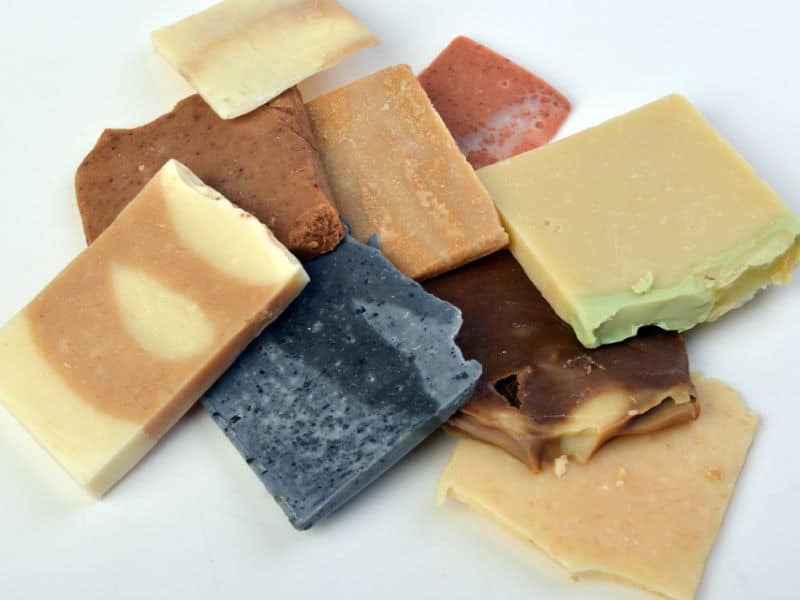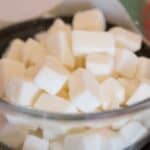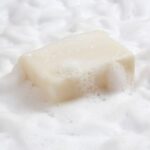Cold process soap is a popular choice for many soap makers, but one common challenge faced by soap makers is the appearance of cracks in their finished product. Understanding why cold process soap cracks and learning how to prevent and fix these imperfections are essential skills for crafting beautiful, long-lasting soap bars.
Cold process soap cracks due to temperature fluctuations, incorrect water content, imprecise recipe measurements, and additives that accelerate trace. Proper insulation, accurate measurements, and cautious use of additives can prevent cracks, resulting in smooth, visually appealing soap bars.
Understanding the factors that contribute to cracking in cold process soap is essential for creating high-quality, long-lasting soap bars. By carefully managing temperatures during the curing process, using the correct water-to-lye ratio, and being mindful of trace-accelerating additives, you can prevent unwanted cracks in your soap.
Additionally, it’s important to test new ingredients, such as essential oils, fragrances, and colorants, to ensure they won’t negatively impact your soap’s texture and appearance.
When you master these techniques, you can create beautiful cold process soap that not only looks great but also provides a delightful user experience.
Let’s take a closer look at the issue of soap cracking and what you can do to avoid it.
Factors Causing Soap to Crack
Temperature changes can lead to cracking in soap. Rapid cooling or uneven temperatures may cause cracks to form. Keep your workspace at a steady temperature to prevent this issue.
The right water content is crucial for smooth soap. Too much water makes soap soft and prone to cracks, while too little leads to brittle soap. Follow your recipe’s recommended water content.
Using an incorrect recipe or imprecise measurements can result in soap cracking. Double-check your recipe and use a digital scale for accurate measurements to avoid issues.
Trace occurs when oils and lye mix and thicken. Accelerating trace can cause cracks. Additives like honey, sugars, or some fragrances can speed up trace, so use them cautiously.
Cracked Soap Usability
Cracked cold process soap is safe to use and maintains its cleansing and moisturizing properties, as the cracks do not alter the soap’s inherent qualities.
However, the aesthetic appeal of the soap may be compromised, making it unsuitable for selling or gifting.
If you wish to offer your soap to customers or present it as a gift, consider salvaging cracked soap through rebatching or surface repair techniques to improve its appearance. By doing so, you can ensure that the final product is both functional and visually appealing, meeting the expectations of customers and gift recipients alike.
Preventing Cracks in Cold Process Soap
Insulating soap keeps it warm, preventing rapid cooling. Wrap soap molds in blankets or towels to maintain a consistent temperature during the curing process.
A proper water-to-lye ratio is essential to prevent cracks. Typically, a 2:1 or 3:1 water-to-lye ratio is recommended, but always follow your specific recipe for best results.
Precise measurements are crucial in soap-making. Use a digital scale to ensure accuracy, and consistently measure ingredients like oils, lye, and water.
Some additives, such as fragrances, essential oils, or alcohol, can speed up trace. Test a small amount of these ingredients before incorporating them to prevent cracking in your cold process soap.
Fixing Cracked Cold Process Soap
Rebatching is an effective way to fix cracked soap. Grate the soap into small pieces and add a small amount of water or milk.
Melt the grated soap in a double boiler, stirring occasionally to ensure even melting. Once melted, pour the soap into a mold and let it cure for 4-6 weeks before using.
For minor surface cracks, use a gloved hand to press and smooth the soap’s surface gently. Another option is to dampen the soap surface with a spray bottle filled with water or rubbing alcohol.
Then, use a silicone spatula or the back of a spoon to even out the cracks and smooth the surface.
Common Ingredients and Their Effects on Cracking
Oils and butters
The choice of oils and butters in your recipe can influence the hardness of soap and its potential to crack.
For example, coconut oil creates a hard, long-lasting soap, while olive oil produces a softer, more moisturizing bar.
To prevent cracking, use a blend of hard and soft oils, like combining 30% coconut oil, 30% palm oil, and 40% olive oil.
Essential oils and fragrances
Certain essential oils and fragrances can accelerate trace or cause cracking. For example, cinnamon and clove essential oils are known to speed up trace.
When using a new fragrance or essential oil, perform a small test batch to ensure it won’t cause issues in your soap.
Colorants and additives
Colorants and additives can affect soap consistency and contribute to cracking. Natural colorants like clays, herbs, or activated charcoal can accelerate trace or alter the soap’s texture.
Start with small amounts, and consider premixing them with a small portion of your soap batter to test their impact on your soap’s texture before adding to the entire batch.
Troubleshooting Specific Cracking Patterns
Surface cracks
Surface cracks often occur due to rapid temperature changes or an accelerated trace. To prevent surface cracks, ensure consistent temperatures during the curing process and avoid additives that speed up trace.
For minor surface cracks, smooth the soap using the surface repair techniques mentioned earlier.
Internal cracks
Internal cracks may be caused by air bubbles trapped in the soap batter or using an incorrect water-to-lye ratio. To avoid internal cracks, thoroughly mix your soap batter to release air bubbles and always follow the recommended water-to-lye ratio in your recipe.
If internal cracks are discovered after cutting the soap, consider rebatching the soap to salvage it.
Edge cracks
Edge cracks can result from uneven temperatures or removing the soap from the mold too soon. To prevent edge cracks, insulate your soap mold during the curing process to maintain even temperatures.
Additionally, ensure the soap has adequately hardened before removing it from the mold. If edge cracks appear, you can trim the edges using a sharp knife or soap planer to create a smooth finish.
Frequently Asked Questions
Cracking can be caused by temperature fluctuations, incorrect water content, imprecise recipe measurements, and additives that accelerate trace.
To prevent cracking, ensure proper insulation, use the correct water-to-lye ratio, measure ingredients accurately, and be cautious with additives that speed up trace.
Yes, cracked soap can be fixed using the rebatching method or surface repair techniques.
Some essential oils and fragrances can accelerate trace or cause cracking. Test a small batch with new fragrances or essential oils to ensure they won’t cause issues.
Colorants and additives can affect soap consistency and cause cracking. Test small amounts of natural colorants or additives before incorporating them into your entire soap batch.
Air bubbles trapped in the soap batter can create voids that lead to internal cracks. Thoroughly mix your soap batter to release air bubbles and prevent internal cracks.
Yes, cracked soap is still safe to use, but the appearance may be less appealing. If the cracks are significant, consider rebatching or repairing the soap to improve its appearance.
Conclusion
In conclusion, creating crack-free cold process soap is achievable by understanding the factors that contribute to cracking and taking preventive measures. By carefully managing temperature fluctuations, using the correct water content and recipe measurements, and being cautious with trace-accelerating additives, you can ensure your soap maintains its desired texture and appearance.
Additionally, learning how to fix cracked soap using rebatching methods and surface repair techniques can help salvage imperfect soap bars. With these insights and tips, you’re now equipped to craft beautiful, long-lasting cold process soap that is not only visually appealing but also a delight to use.






